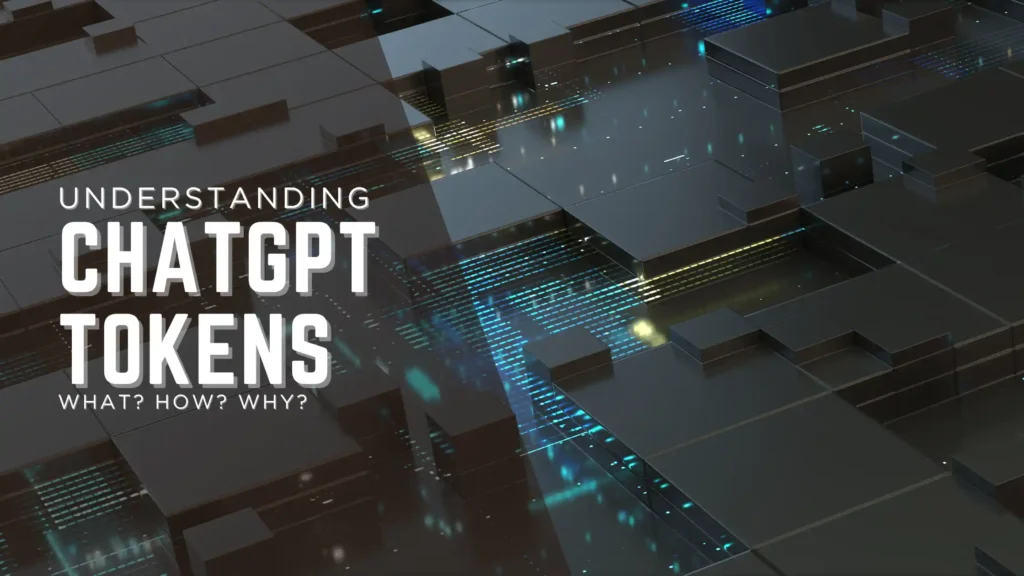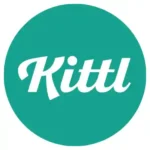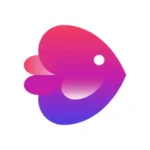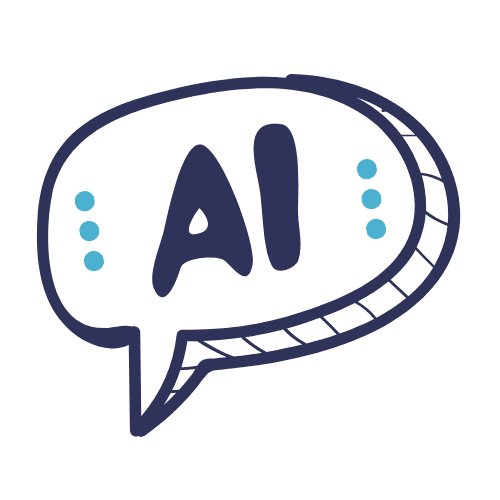When you use ChatGPT, you might wonder how it processes text. The magic happens through tokens, which are small pieces of words that the AI uses to understand and generate responses.
ChatGPT models have token limits, with GPT-3.5 typically capped at 4096 tokens, which affects how much text you can input and receive in a single conversation.

Tokens aren’t exactly words – they’re common sequences of characters. For example, the word “hamburger” might be broken into tokens like “ham,” “bur,” and “ger.” This tokenization system helps the AI process language efficiently, but it also creates limitations on how much you can write or read in one session.
Understanding tokens matters because they directly impact your experience with ChatGPT. They determine how much context the model can consider when responding to your questions and how detailed its answers can be. Whether you’re using the free version or paying for a subscription, token limits influence what you can accomplish with this powerful tool.
Key Takeaways
- Tokens are pieces of words that ChatGPT uses to process text, with most models having specific token limits that restrict conversation length.
- Token usage affects both input and output, determining how much context ChatGPT can consider when generating responses.
- Managing tokens efficiently helps users maximize their interactions with ChatGPT, especially when working with lengthy texts or complex conversations.
Understanding ChatGPT Tokens
Tokens are the fundamental building blocks that ChatGPT uses to process text. They represent how the AI model breaks down language into manageable pieces for analysis and generation.
Fundamentals of Tokenization
In natural language processing, tokens are pieces of text that serve as the smallest units the model can work with. ChatGPT tokens can be single characters, parts of words, complete words, or even punctuation marks. For example, the word “tokenization” might be split into multiple tokens like “token” and “ization.”
The tokenizer converts human text into these numerical representations that the AI can understand. This process happens behind the scenes whenever you interact with ChatGPT.
English words typically average about 4 characters per token. Common words often become single tokens, while rare words might be broken into multiple tokens.
Understanding tokenization helps explain why ChatGPT sometimes counts text differently than you might expect based on word count alone.
Token Usage and Limits
ChatGPT models have specific token limits that affect how much text you can input and receive. GPT-3.5 can handle up to 4,096 tokens per conversation, while GPT-4 can process 8,192 or more tokens depending on the version.
These limits include both your prompts and the AI’s responses combined. When you reach the limit, the model loses context from earlier in the conversation.
Token usage affects:
- Context retention: Longer contexts require more tokens
- Response length: More complex requests use more tokens
- Cost efficiency: API users pay based on token usage
Planning your prompts with token limits in mind helps maximize ChatGPT’s effectiveness, especially for complex tasks that require significant context.
Tokenizer Algorithm Insights
ChatGPT uses a byte-pair encoding (BPE) tokenizer algorithm that was trained on a diverse corpus of text. This algorithm identifies the most common character combinations and creates a vocabulary of tokens.
The tokenizer works by:
- Breaking text into Unicode characters
- Applying specific encoding rules
- Merging common character pairs iteratively
- Creating a final set of tokens
This approach allows ChatGPT to handle multiple languages, special characters, and even emojis. However, it also means that uncommon words, technical terms, and non-English text often require more tokens.
The tokenizer treats spaces differently than other characters, which affects how text is processed. Understanding these nuances helps explain why certain inputs might use more tokens than expected.
ChatGPT Model Overview
ChatGPT models have evolved rapidly, with significant improvements in capability and context handling. The current models offer varying token limits and features that affect their performance and use cases.
Evolution of OpenAI GPT Models
OpenAI’s GPT models have undergone remarkable development since their introduction. The original GPT model set the foundation, while GPT-2 expanded capabilities significantly.
GPT-3 represented a major leap forward with 175 billion parameters, enabling more natural language understanding. This model became the basis for the first ChatGPT release in 2022.
GPT-3.5 introduced improvements in instruction-following and reduced harmful outputs. It typically handles around 4,096 tokens per conversation, limiting the amount of text it can process at once.
The latest GPT-4 models mark the current pinnacle of OpenAI’s technology. GPT-4 demonstrates enhanced reasoning, creativity, and understanding of complex instructions compared to previous versions.
Key Features of GPT-4 AI Language Models
GPT-4 significantly expands token context length, with GPT-4 Turbo handling up to 32,000 tokens. This allows for much longer conversations and document analysis than earlier models.
The model shows improved performance across various benchmarks in areas like:
- Complex reasoning
- Factual accuracy
- Safety parameters
- Instruction following
GPT-4 Turbo, available to ChatGPT Plus subscribers, offers the most recent training data and fastest response times. It processes tokens more efficiently, allowing for quicker interactions even with complex prompts.
Token usage is more optimized in GPT-4 models, making them more cost-effective for developers despite their advanced capabilities. The models also demonstrate better understanding of nuanced instructions and maintain context more effectively throughout long conversations.
Interactions with ChatGPT
When using ChatGPT, how you structure your conversations directly impacts the quality and efficiency of responses. Understanding interaction limits and crafting effective messages helps users get better results while managing token usage.
Crafting Effective Prompts
The way users phrase their prompts significantly affects ChatGPT’s output. Concise prompts typically yield more focused answers while using fewer tokens. Being specific about desired format, length, and tone helps ChatGPT understand what’s needed.
For example, rather than asking “Tell me about climate change,” a more effective prompt might be “Explain three main causes of climate change in simple terms.” This clarity reduces token usage and produces more relevant responses.
Technical users making API calls should pay special attention to prompt design, as this directly impacts costs. Well-crafted prompts can reduce the number of follow-up messages needed, saving tokens in the process.
Best practices for prompts:
- Be specific about what you need
- Include desired format (list, table, etc.)
- Specify tone or complexity level
- Avoid vague or overly broad questions
Managing Conversation Length
ChatGPT has limits on how many interactions users can have within certain timeframes. According to search results, free version users may face limits of 25-50 interactions per 3-hour period, though some users report hitting limits after just 5-8 messages.
Long conversations consume more tokens as ChatGPT needs to process the entire conversation history. Breaking complex topics into separate chats can help manage these limits effectively.
The length of input messages also matters. Shorter messages use fewer tokens, allowing for more back-and-forth in a conversation before hitting limits. For lengthy inputs, consider breaking text into smaller chunks or summarizing key points.
Tips for managing conversation length:
- Start new conversations for unrelated topics
- Break long inputs into smaller chunks
- Be aware of model-specific interaction limits
- Consider using “continue” prompts for long outputs
Token Limitations and Management
Token limits affect how much information ChatGPT can process and generate in a single conversation. Understanding these constraints helps users make the most of the AI’s capabilities while avoiding frustrating cutoffs.
Strategies for Efficient Token Use
Token efficiency starts with understanding how tokenization works. Single characters in English often consume one token, but this varies with special characters and non-English languages. When crafting prompts, be concise and specific to reduce input token usage.
Breaking complex questions into smaller parts helps manage token limitations. This approach allows for more detailed responses while staying within the output token limit of 4,096 tokens for GPT-3.5.
Using bullet points rather than lengthy paragraphs saves tokens. Similarly, removing unnecessary details, repetitive instructions, and excessive examples reduces token consumption.
For ongoing conversations, summarizing previous exchanges helps maintain context without repeatedly sending the entire conversation history.
Implications of Token Limitations on API Requests
API users face stricter token management challenges than web interface users. The total number of tokens (both input and output) counts against usage quotas and affects costs directly.
GPT-3.5 Turbo has a 4,096 token limit per request, while GPT-4 models offer expanded context lengths up to 128k tokens. However, output tokens are still capped at around 4,096 tokens per response.
Rate limits apply to API requests based on tokens per minute rather than daily totals. This approach allows for flexibility in usage patterns while preventing system overload.
Applications requiring lengthy contexts should implement token tracking mechanisms to avoid unexpected truncations. Developers can optimize by preprocessing text and removing non-essential content before sending API requests.
Subscription Plans and Resource Allocation

ChatGPT offers various subscription options to meet different user needs. Understanding these plans helps users efficiently allocate resources and manage costs based on their usage patterns.
Comparing ChatGPT Plus and Team Plans
ChatGPT Plus subscription costs $20 per month and provides individual users with priority access during peak times. This plan ensures uninterrupted access to the service when free users might face delays.
The Team plan, priced at $30 per user monthly, targets collaborative environments. It includes all Plus features while adding team management capabilities and higher message limits.
Both plans offer access to GPT-4, the more advanced model, though with different usage caps. Plus users receive a set allocation of GPT-4 messages within a specific timeframe.
Team plans provide greater flexibility for organizations, with expanded message limits and shared workspace features. This makes it cost-effective for groups who need consistent access to AI capabilities.
Understanding API Key Usage and Costs
API access follows a different pricing model based on tokens rather than a flat subscription fee. Tokens represent text fragments processed by the system – both input and output count toward usage.
The total cost depends on:
- Model used (GPT-3.5 vs. GPT-4)
- Input tokens ($0.0015-$0.03 per 1K tokens)
- Output tokens ($0.002-$0.06 per 1K tokens)
This usage-based approach allows developers to scale costs with actual usage. API keys enable more precise resource allocation, letting organizations plan effectively based on monthly token allowances.
Heavy API users typically face higher costs than subscription users. However, the API offers greater customization and integration possibilities for applications.
Enhancing ChatGPT with Plugins and Extensions

ChatGPT’s capabilities can be significantly expanded through plugins and extensions. These tools connect the AI to external data sources and functionalities, making it more versatile and practical for everyday tasks.
Leveraging the Image Generation Feature
The image generation feature in ChatGPT transforms text descriptions into visual content. Users can create custom images by providing detailed prompts about what they want to see.
This tool is particularly valuable for designers, content creators, and marketers who need quick visual concepts. The quality of generated images depends on how specific the prompt is – more details typically yield better results.
The GPT Builder also allows users to customize image generation capabilities for specific use cases. For example, a business might create a specialized GPT that generates product mock-ups or marketing materials in their brand style.
Image generation respects content policies to prevent misuse. The system has built-in safeguards against creating inappropriate imagery.
Incorporating Real-Time Web Search
Real-time web search capabilities allow ChatGPT to access current information beyond its training data. This feature helps users get up-to-date facts, news, and research without leaving the chat interface.
When activated, the web search plugin retrieves relevant information from the internet and presents it within conversations. This is especially useful for time-sensitive queries about recent events, changing statistics, or new developments.
Several Chrome extensions enhance this functionality by adding custom search options or specialized data sources. Users can install these extensions to tailor ChatGPT’s web access to their specific needs.
The integration works seamlessly within conversations, with ChatGPT citing sources for information it retrieves. This maintains transparency and allows users to verify data from original sources if needed.
Practical Applications and Use Cases

ChatGPT tokens power numerous real-world applications that streamline workflows and boost productivity. Understanding token usage helps optimize these applications for better performance and cost efficiency.
AI Transcription for Meetings and Summaries
AI transcription tools transform how professionals document meetings by converting speech to text. These tools use tokens to process long meeting transcripts from platforms like Google Meet and Microsoft Teams.
Tactiq’s AI Meeting Kits exemplify this use case, automatically generating comprehensive summaries that would otherwise consume significant token counts. The AI analyzes hours of conversation while maintaining context across thousands of tokens.
For efficiency, many transcription tools employ token-saving techniques:
- Breaking long transcripts into manageable chunks
- Filtering out filler words and repetitions
- Prioritizing key points over verbatim transcription
This approach preserves token usage while capturing essential information. The average meeting transcript consumes between 6,000-15,000 tokens, making optimization critical for regular users.
Code Generation and Programmatic Use Cases
Developers leverage ChatGPT’s token system to generate code snippets and solve programming challenges. Token awareness becomes crucial when handling complex coding tasks.
Effective strategies include:
| Strategy | Token Benefit |
|---|---|
| Providing clear, concise instructions | Reduces input tokens |
| Requesting specific language/frameworks | Focuses output |
| Breaking complex requests into steps | Prevents token limits |
Programming use cases benefit from tokens’ ability to maintain context between prompts. This enables iterative code development where each response builds on previous outputs.
Developers commonly use ChatGPT to debug existing code, translate between programming languages, and generate boilerplate code. Each of these tasks requires careful token management to receive complete, usable outputs.
Meeting Preparation and Action Item Documentation
ChatGPT helps professionals prepare for meetings and document action items while optimizing token usage. Before meetings, it can generate agendas, research topics, and prepare discussion points.
During meetings, note-taking applications can track conversations and identify key commitments. These tools process spoken content into tokens, extracting promises, deadlines, and assignments.
Post-meeting applications include:
- Converting discussion points into actionable tasks
- Generating follow-up emails based on meeting outcomes
- Creating documentation from meeting notes
The token efficiency of these applications determines how much meeting content can be processed. Most systems optimize by focusing on action-oriented statements rather than processing entire conversations.






